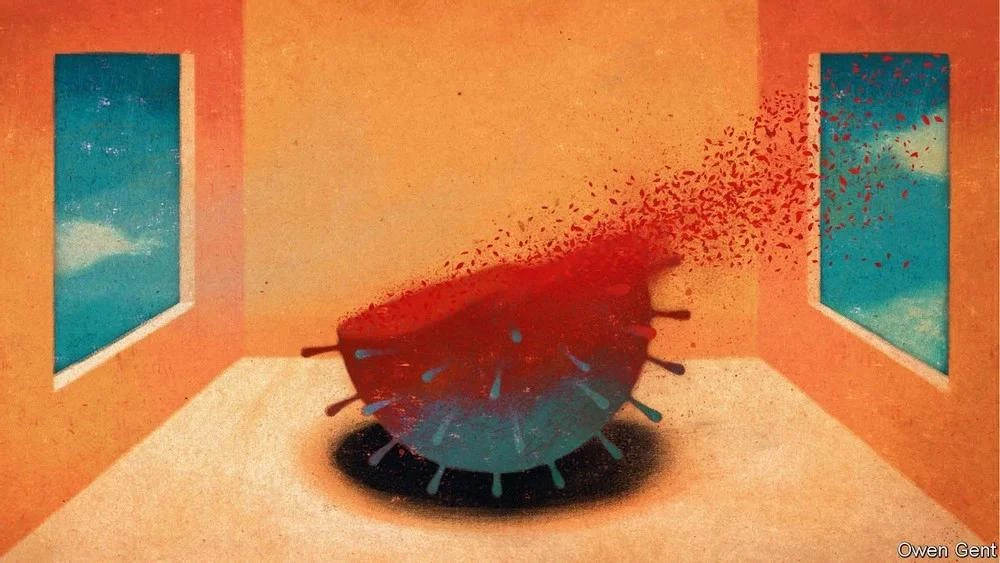
On january 24th 2020 three families, together numbering 21 people, came independently to eat lunch at a restaurant in Guangzhou. It was the eve of the Chinese New Year. Extra seating had been squeezed in to accommodate more patrons than usual, and these families were crowded onto neighbouring tables along one wall of the windowless room (see plan). The largest of them—a party of ten who had arrived the day before from Wuhan—sat around the middle table. Later that day, one of their number developed fever and a cough and, at a hospital, was diagnosed with covid-19. Within two weeks, ten of the 21 were confirmed as being infected with sars-cov-2.
The families involved had never met and video footage showed they had no close contact during the lunch. An initial analysis by the Guangzhou Centre for Disease Control and Prevention proposed that the infection had spread via respiratory “droplets”. But medical lore has it that such droplets—defined as particles expelled while breathing that are more than five microns across—cannot travel more than a couple of metres after they have been exhaled. And some of those who became infected during the lunch were farther than that from the “index” patient...
The Economist: Improving ventilation will help curb SARS-CoV-2


